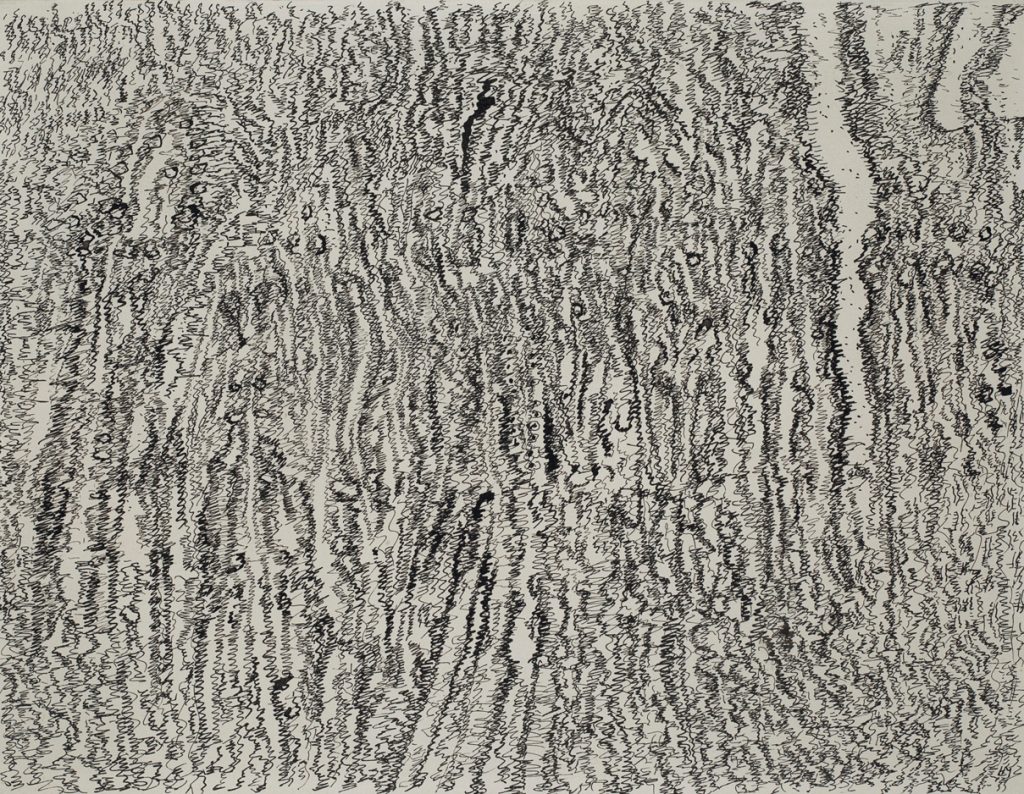Drawings from Henri Michaux
03.26.2018Henri Michaux, by Paul Nyzam
When, one night in late 1954, Henri Michaux holed up for the first time with writer Jean Paulhan and Swiss poet Edith Boissonnas to indulge in a bit of mescaline, he was not your regular drug addict. Sure, he had already explored ether and tried opium (not a fan) but described himself as « a water-drinking type of person ». « Zero alcohol. No stimulants and for some considerable time no smoking, no coffee drinking and no tea either ». He was a respectable, 55 year old author who looked at this experience from a quasi-scientific perspective, a man yearning for knowledge and on a quest that made « Mescaline the subject explored ». He took mescaline several times – some monitored medically – and they had a decisive impact on his work, giving rise to four narratives regarding the hallucinations generated by the psychotropic drug: Misérable miracle (1956), L’infini turbulent (1957), Paix dans les brisements (1959) and Connaissance par les gouffres (1961).
Although he may have been a forerunner of the generalised use of hallucinogenic drugs by artists in the Sixties in the literary field (especially by representatives of the Beat Generation); the plastic arts (the illustrations of Arnulf Rainer when under the influence of LSD come to mind) and in the field of music (The Doors chose their band name as a tribute to a book by Aldous Huxley called “The doors of perception”, which spoke of the effects of mescaline), Henri Michaux was nevertheless not the first to go down this weird and wonderful road of discovery: Thomas de Quincey and Charles Baudelaire explored it during the XIXth century and in the Roaring Thirties, Antonin Artaud had already described the effects of peyotl (the cactus from which mescaline is extracted) and Polish artist Stanisław Witkiewicz had already painted portraits when under its influence. But the Belgian writer, who became a French citizen at that time, was to recall the experience with a new twist, midway between the written word and the medium of drawing.
Was Michaux expecting to experience such a flood of images, flashes of light, so many crackling noises, so much sensory overload, apparitions and disappearances or to be snatched and even swallowed up whole by mescaline? The fascination was such that he was in a rush to jot everything down on paper to try to record his hallucinogenic experiences. His descriptions are vivid and the reader is taken with a jolt on a tumultuous journey with no transition from the Himalayas « higher than the highest peaks » down to « the fringes of a tropical ocean, with the thousand shimmering, silvery lights of an invisible moon ». But pretty soon words do not seem to suffice, as if they themselves are swept away by the spontaneous flow of mescaline-infused visions. And so the letters disrobe, shrink and become illegible; gradually the writing begins to tremble, spasm and flow into strange and mysterious drawings. As they extend the text, the drawings turn the reader into an observer. On the white sheet of paper, traced in black ink using a fine pen stroke, sometimes dotted with touches of red there are furrows, chasms, whirlpools, all divorced from reality and in tune with hallucinatory vibrations of their own.
« Dashes, downstrokes, pinnacles, little columns or slender forms, delicate, arched »: we find ourselves caught up in a journey that we will remember for a long time – a journey into « the space within ».
Paul Nyzam is a Contemporary Art expert at Christie’s.


